I read some pretty heavy books lately, so I apologize I don’t really have any light and fluffy recommendations for this month!
1 ) White Oleander by Janet Fitch
A compelling, dark, sometimes heart-warming read about Astrid’s difficult childhood. It starts with her life with her eccentric, but clearly mentally ill, mother in LA.
“Always learn poems by heart,” she said. “They have to become the marrow in your bones. Like fluoride in the water, they’ll make your soul impervious to the world’s soft decay.”
The relationship between Ingrid and Astrid is both endearing and disturbing. Even at a young age, Astrid seemed older than her years.
“I tried not to make it worse by asking for things, pulling her down with my thoughts. I had seen girls clamor for new clothes and complain about what their mothers made for dinner. I was always mortified. Didn’t they know they were tying their mothers to the ground?”
Ingrid is a brilliant poet but ends up murdering her ex-boyfriend and goes to prison. This begins Astrid’s story of being bounced around foster homes. Each place she goes she learns something different about herself, survival, life, family and love.
“Honey, this is what happens when you fall in love. You’re looking at a natural disaster.” I vowed I would never fall in love.”
It’s not your typical book. The book is written beautifully, painting pictures for the reader that will not be forgotten.
Wherever Astrid goes, she finds solace in someone. In the first house, a trailer-trash type place, she befriends one of the young boys there. In the next place she befriends one of the neighbors who teaches her a lot about life and love.
“Isn’t it funny. I’m enjoying my hatred so much more than I ever enjoyed love. Love is temperamental. Tiring. It makes demands. Love uses you. Changes its mind.”
“When you started thinking it was easy, you were forgetting what it cost.”
There was one foster home where this wealthy interior designer had a beautiful home and had several foster kids, teenage girls. It seemed like it was a wonderful home. But looks were deceiving. As soon as the social worker left, Astrid found out the foster mom was basically starving all the teenagers. The kitchen was locked and they were allowed to eat dinner and that was it. Astrid began stealing food at school from the garbage because she was literally starving to death.
There were so many horrible things in the book, but it’s balanced by some glimpses of beauty and humanity. I loved this book!
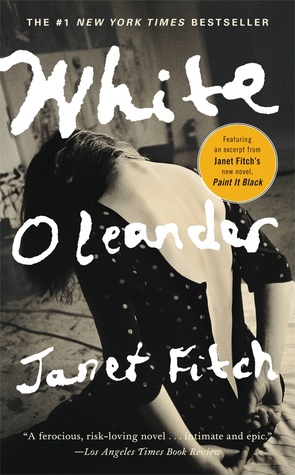
2 ) If You Knew Her by Emily Elgar
What an interesting concept! Frank is in a coma in a hospital. Alice is the nurse in the coma wing. Cassie comes in to that wing in a coma as well and the mystery of what happened to put Cassie into that coma starts to unravel. It turns out that Frank is regaining his consciousness and is hearing everything that goes on around him. He’s hearing all the visitors that Cassie has, hearing the confessions, deducing who ran her down and put her into that coma. But will he be able to regain consciousness in time to warn everyone?
The way the story is told is really well done and I did not guess the ending or who had done it! I thought I had and was wrong. Very good! I could not put it down.
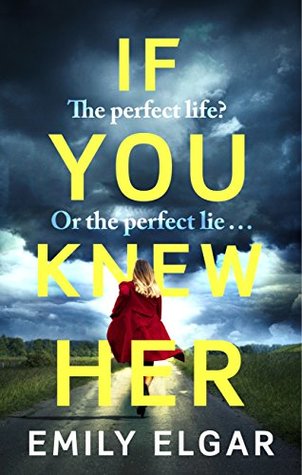
3 ) The Dead House by Billy O’Callaghan
This was a good, solid ghost story!
Maggie is an up-and-coming artist in London. Mike is her agent/dealer. After a horrible domestic violence event that puts Maggie in the hospital, she decides she needs to get away to clear her head and get some space and get away from her abusive ex-boyfriend. On her wandering road trip across Ireland, she decides to buy an abandoned, run-down cottage in a tiny seaside town. She hires some local contractors to fix it up and install electricity and plumbing, and once it’s inhabitable, she moves in.
She invites Mike and two other friends, Liz and Maggie, to her cottage for a weekend to celebrate her new abode. After spending a fun day exploring the tiny towns nearby, drinking in pubs and eating good food, they open up the whisky and someone brings out a ouija board. This is where the fun night takes a very creepy, dark turn.
The cottage is haunted by the original inhabitant. The four friends unknowingly invite an unfriendly spirit into their circle and Maggie becomes a changed person.
The book is short, and that’s the only flaw. I think it could have been made longer and really drawn out the suspense. But the book is rich in creepiness. I mean it’s Ireland, full of ghosts and spirits and druids and lush history. The cottage itself is creepy–out in the middle of nowhere. It all works! Great book!
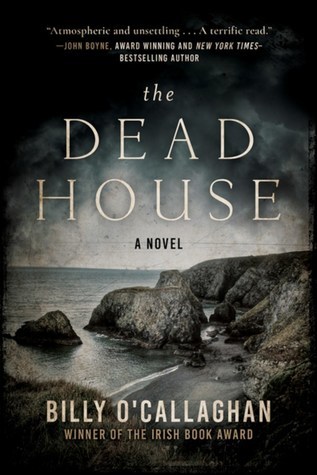
4 ) Rest in Power: The Enduring Life of Trayvon Martin by Sybrina Fulton and Tracy Martin
“They say when an adult dies you bury the past; when a child dies you bury the future.”
I don’t even know where to start. Every time I try to write a review, or think about this book, I get choked up. It was beautifully written by Trayvon’s parents. They were eloquent and emotional, but direct and focused.
“I could never have imagined that my son would become, in death, a symbol for injustice.”
They perfectly described the events leading up to the death of their son, the blurry fog of disbelief after, the rage of injustice with the Florida’s justice system and the lack of humanity with the police who refused to arrest The Killer.
As a mother, I don’t know how I thought I could read this powerful book and not be a crying mess the entire time. I felt all the range of emotions Sybrina and Tracy felt. I read this book in short burst because it was so emotionally heavy I just couldn’t read it for long periods of time.
“When I became a parent, I would tell my sons, “Hey, racism is alive and well, and you have to watch out for it all of the time.”
“My mother always advised her kids, “If you see somebody coming at you with any kind of racism, run.”
“So just like my mother told me, I told my kids, including Trayvon: “If you see yourself about to get into a racial confrontation, eliminate yourself from the equation.”
“Run, because the confrontation isn’t worth it. Run, because the confrontation may escalate. Don’t stop to discuss it. This is NOT the time to have a conversation about race. If you have to protect yourself, do so. But if you can, just run.”
The most interesting part of the book was about the movement that began and spread all over the country, protesting the fact that the police refused to arrest George Zimmerman. Al Sharpton and Jesse Jackson got involved. There were marches and peaceful protests and speeches and rallies. All of that was really empowering to read (and frustrating). It was also encouraging how many celebrities got behind the movement.
” ‘If they can bear the pain to stand up for us, then we can take the pain to stand up with them. They have woke America up. And they have shown something that this world needs to see. And that is we love our children, like everyone else loves their children. We may not have as much as others have, but we have each other, and we are not going to let anyone take our children from us.’ ”
“You are risking going down as the Birmingham and Selma of the twenty-first century!” he said. “You are making the world know you as a place of racial intolerance and double standards. “For one man, would you risk the reputation of a whole city? Zimmerman is not worth the history of this city.”
It even went to the White House. I remember watching Obama make a statement about Trayvon.
“I felt he was speaking not only as a parent but as an African American parent of African American children in a country where black children are still so vulnerable to violence of all kinds. Our children can’t just be kids; they have to be so much more. Our children don’t always feel safe in their own communities.
Later, President Obama would speak again about Trayvon’s death, at another press conference: “You know, when Trayvon Martin was first shot I said that this could have been my son. Another way of saying that is Trayvon Martin could have been me thirty-five years ago.”
The second half of the book was the inside details of the trial. This part was long and sometimes redundant, but I think also important because it showed just how absurd the trial was. The issue of racial profiling wasn’t even allowed to be discussed in the trial. I don’t even understand how the judge ruled on that. That goes to the heart of what happened.
I still can’t wrap my brain around how the killer could invoke Stand Your Ground Laws when he was FOLLOWING TRAYVON IN HIS CAR. If he was so “threatened” he could have just driven away. The entire trial was a travesty.
“The problem that I had with this was: If this was a Stand Your Ground case, if the killer was in true and immediate fear for his life, why did he follow my son? Why did he trail and confront the person who caused such fear?”
“Stevie Wonder announced he would not play another concert in Florida until the state government repealed its Stand Your Ground law. (Florida still hasn’t repealed the law.)”
But in the end, Trayvon’s parents found grace and healing with their strong faith and the support of their community. They created a foundation and with the help of celebrities and activists, are doing GOOD WORK to help other parents who lost children to gun violence and try and change the Stand Your Ground laws.
“Trayvon’s spirit was still with us, but not just us. His spirit was motivating a movement.”
It was an excellent book. But you should be emotionally prepared to be gutted.
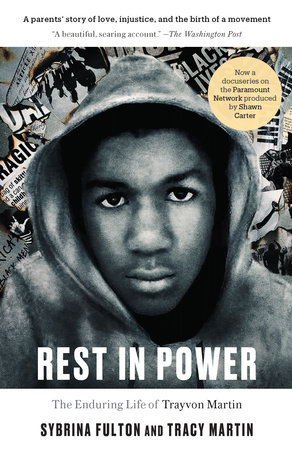
5 ) We Hope for Better Things by Erin Bartels
This was a fascinating read!
It’s three stories in one, about several generations of a family. It starts with Elizabeth Balsam in current times. She’s a reporter in Detroit. She is approached by a local man and asked to deliver a box of photos and an old camera to a relative she didn’t know she had. She says no but then she loses her job after screws up an investigation and she decides she needs a change of scenery.
So she goes out into the country somewhere in between Detroit and Flint, and stays with her great aunt Nora Balsam in a 150 year old farmhouse. And that’s where Nora’s story picks up. Nora’s story takes place in the 1960’s in Detroit. Nora comes from money. She meets an African American photographer, William, and they fall in love but it’s during a time period when interracial marriages is not ok. Nora is disowned by her family. Faced with poverty and racism, Nora and William flee Detroit and live in this old farmhouse that has been her family for centuries.
It turns out, this farmhouse has a lot of history. Nora’s distant relative, Mary Balsam, was using that farmhouse as part of the Underground Railroad during the Civil War. She was taking in freed slaves that fled the South, giving them a home, jobs and basically a family.
It was a super fascinating, heartbreaking, honest story about race, racism, history and love.
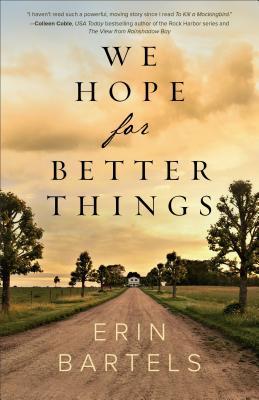
Happy Reading!
These posts have Amazon affiliate links.
Marianne
Thanks for the book reviews. They all look pretty good.
Lisa Eirene
Thanks!
emmaclaire
Dang, girl, you need to read something fluffy – quick! Elinor Lipman has a new one out (Good Riddance), that might do the trick LOL I admire you for taking on the Trayvon Martin book – that would be a hard one to read. Thanks for the fresh recommendations! I am currently reading John Cleese’s autobiography So, Anyway, and I am really enjoying reading about his early years – how his law degree never lead to anything, how he stumbled into his comedy career, he met the Monty Python crew, etc. – very fun!
Lisa Eirene
I know!! It was a rough month! I will check out that recommendation. I love John Cleese!